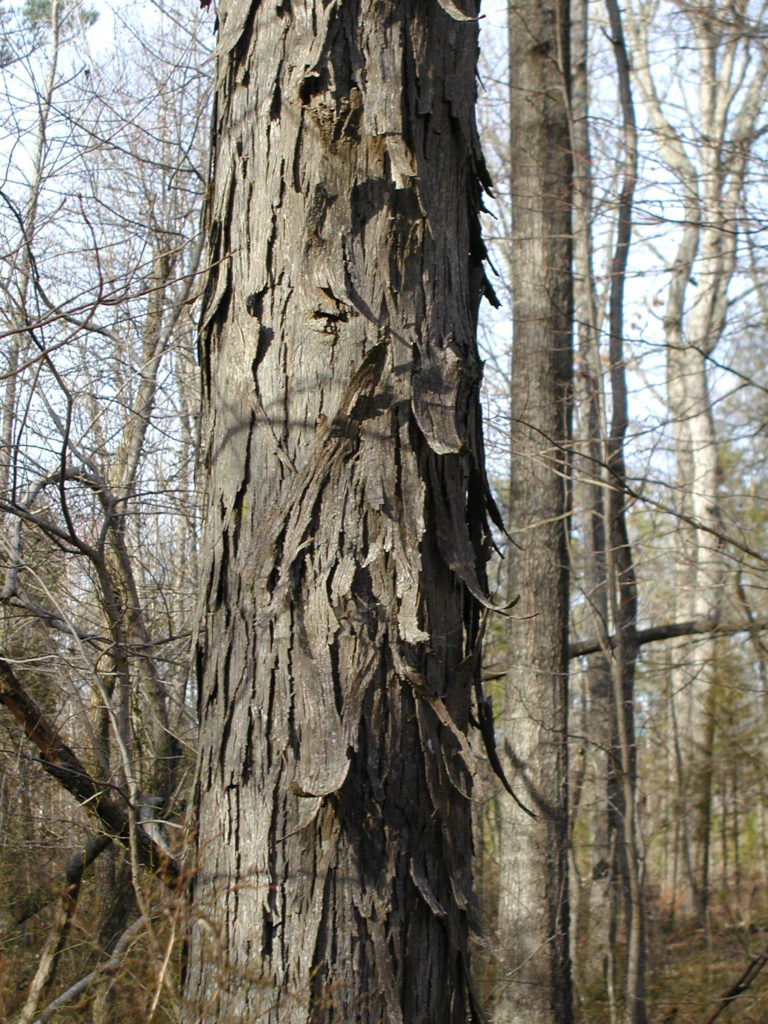This plant is not currently for sale. This is an archive page preserved for informational use.
The Shagbark Hickory is a stately deciduous tree important in the Oak-Hickory Forests of Eastern North America. It is easily recognizable due to its bark, which peels off in large, loose strips. It commonly has a narrow, oval crown and grows to a height of eighty to one hundred feet or more. The leaves of Shagbark Hickory are glossy and dark green, one to two feet long. They are alternate, pinnately compound, usually with five toothed leaflets that turn bright shades of yellow in fall. The timber is heavy, hard, and tough, used to make implements requiring strength, including axes, axe-handles, and bows for native American Indians. The fruit are showy and roundish, and produce edible seeds. These high-value seeds are rich in fat and protein and low in carbohydrates, sweet and nourishing. They thus are important in the diets of many forest animals. They were a dietary staple of Native Americans, as described in William Bartram’s Travels of 1791.

